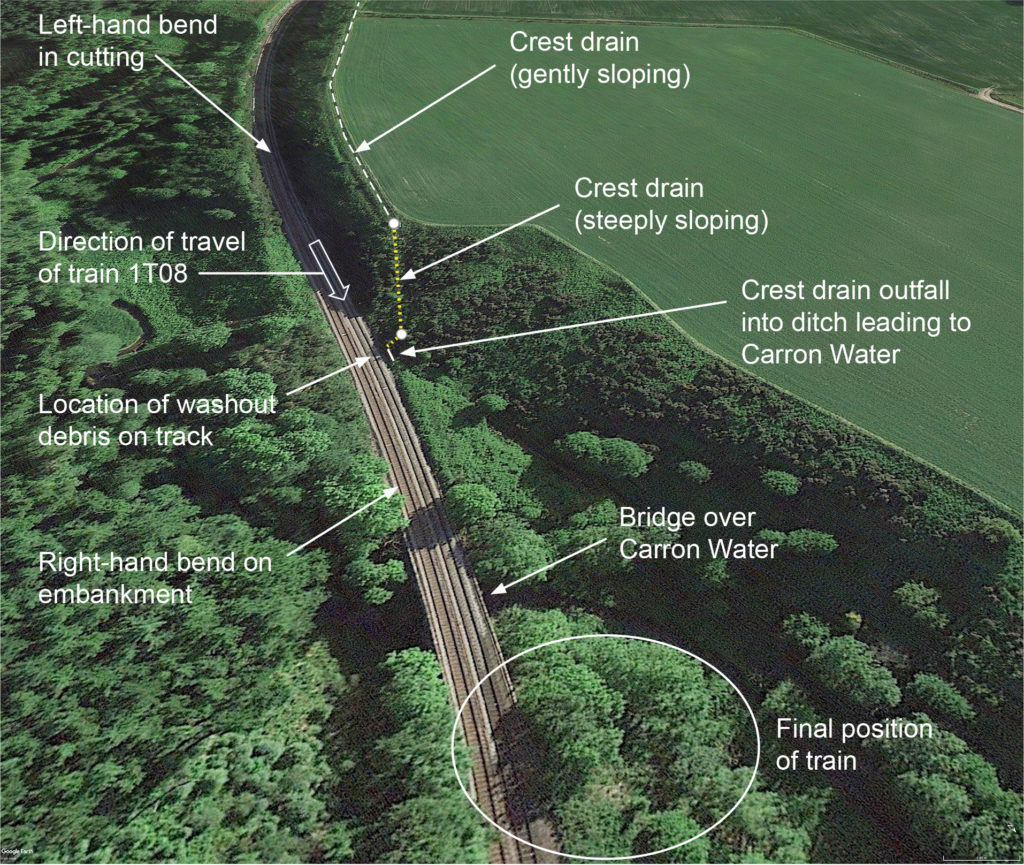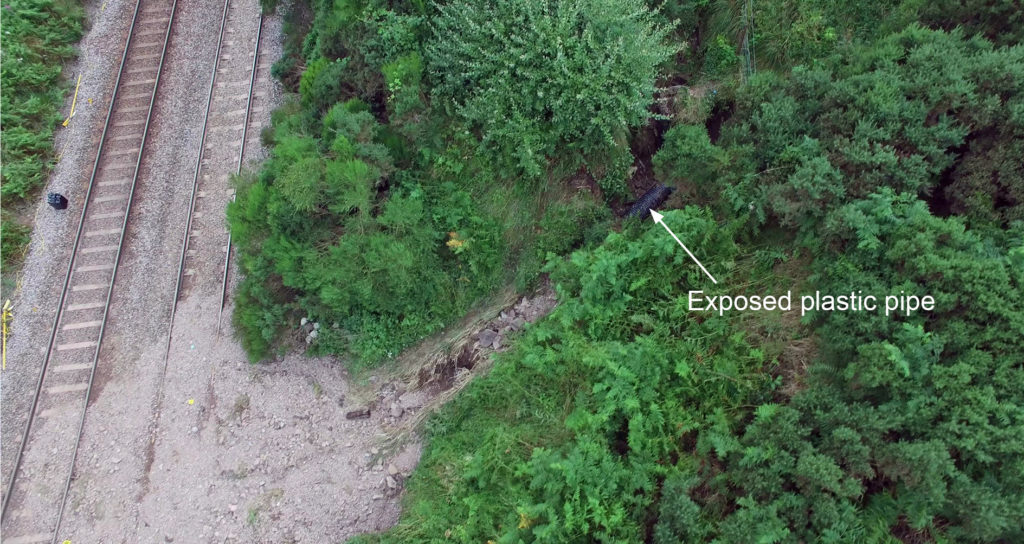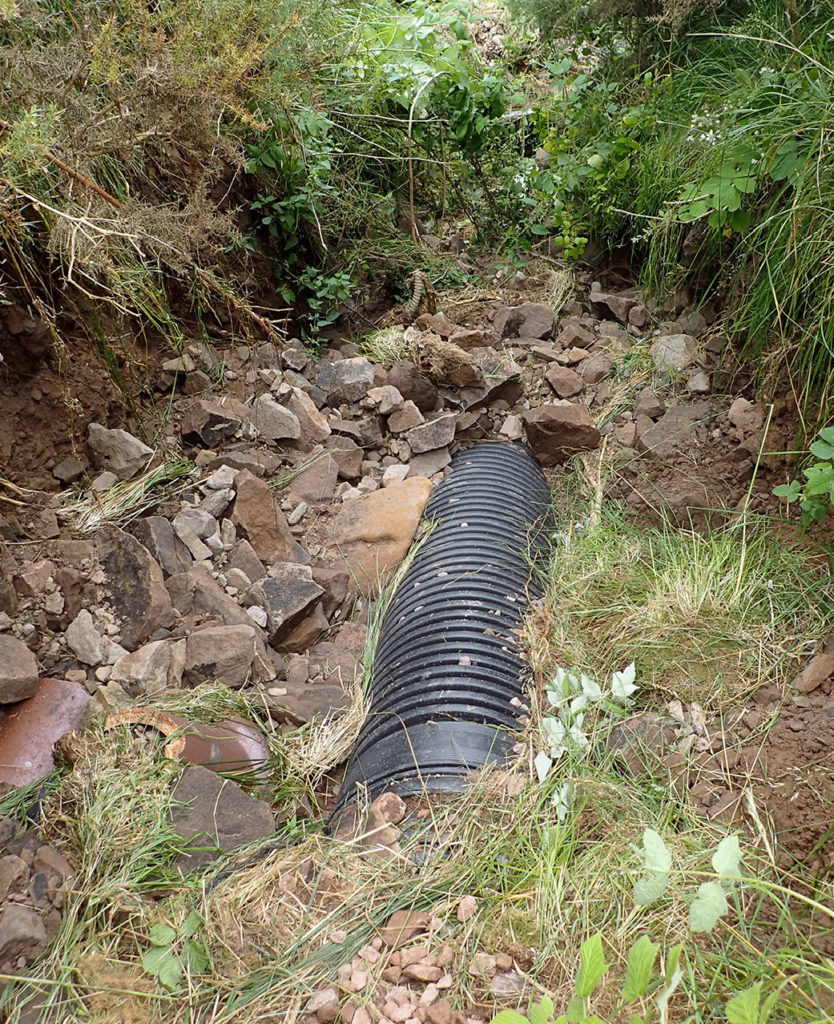The publication of RAIB’s interim report on the fatal Carmont train crash on 12th August follows reports published by Network Rail’s earthworks and weather task forces in February.

This interim report details the events leading up to the derailment and shows that its immediate cause was the train colliding with stones washed out onto the track from a gravel-filled crest drain onto which the local topography had directed large amounts of surface water onto the steeply sloping drain after 51 mm of rain had fallen over a three-hour period. This was 75% of the area’s average monthly rainfall.
The failed crest drain was installed in 2012 as part of work to stabilise a steep cutting. The RAIB investigation found that gravel was missing from the drain to a depth sufficient to expose the buried drainpipe over a distance of eight metres upslope of a catchpit where the drain was under a steep gorse-covered slope. RAIB found that this part of the drain was not listed on Network Rail’s drain maintenance database and was unable to find any evidence of it being inspected between its construction and the accident.

Thus, the RAIB report reinforces the conclusion of the earthworks task force report that maintenance of drainage systems is of paramount importance.
RAIB’s ongoing investigation into the Carmont accident will consider the design and construction of the failed drain. It will also consider the response to severe weather events, decision making at times of widespread disruption, crashworthiness in high energy accidents and the mitigation of derailments at high-risk locations.


